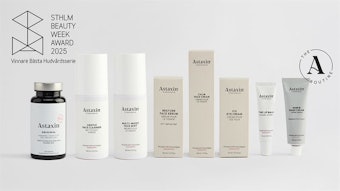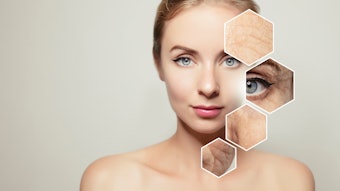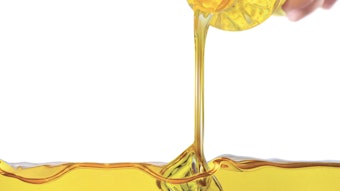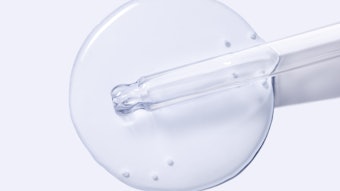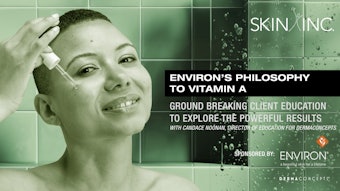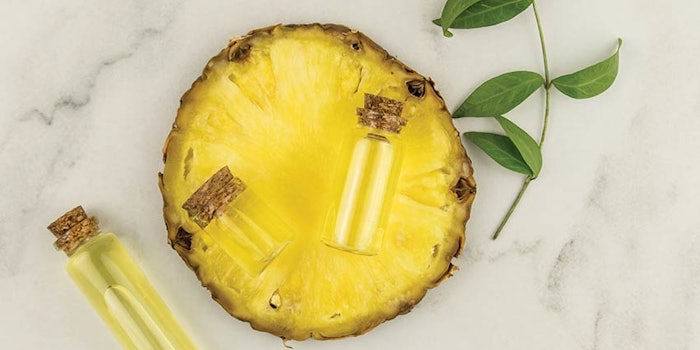
For some reason, we skin care enthusiasts have the tendency to obliterate our skin with scrubs, peels, hydroxy acids, microdermabrasion, sonic brushes, skin scrubbers and other procedures. Regular exfoliation is non-negotiable in a solid skin care routine; however, we need to find an effective balance. We need to find a way to keep the skin polished without causing inflammation and damaging our protective barrier.
Along with other environmental assaults and UV exposure, aggressive exfoliation can produce inflammation that leads to aging. Since skin recovers more slowly past the age of 25, it is important that we figure out the right balance of exfoliation to ensure beautiful skin without inflammation and aging. The answer is enzymes. Less is more, as gentle exfoliation keeps skin cells from accumulating. Enzymes are enjoying some much-deserved buzz in the skin care community right now, thanks to their gentle and unique benefits. Enzymes are proteolytic, which help to break proteins down into smaller protein fragments called peptides and amino acids. This article will explore the action and benefits of enzymes in skin care.
Enzyme Basics
Enzymes are complex protein molecules and are biological catalysts. Meaning, they can enable a chemical reaction while remaining unchanged themselves. The skin has natural enzymes known as cholesterol sulfates that regulate epidermal differentiation, barrier function and desquamation. As we know, these natural enzymes on our skin don’t always work at optimum levels, and we need to apply topical enzymes to assist our skin. We use enzymes to enable the breakdown of keratin in cells, while losing the desmosomes.
Desmosomes are specialized adhesive protein complexes that localize the intercellular cement and adhere cells together. Alpha hydroxy acids (AHAs) break that bond, however, only enzymes are used to enable the breakdown of keratin in the cells. They are classified as proteases (protein digesting enzymes). They break down the peptide bonds.
Enzymes have been used in skin care formulations for some time. Initially, animal derived enzymes such as pepsin were used in products. Pepsin is produced in the gastric cells of the stomach lining and is the main digestive enzyme in humans and other mammals, where it helps digest proteins in food.
Consumers are aware and demand plant-derived or synthetically manufactured enzymes. Luckily, new technology provides us with gentle exfoliants that have the ability to digest and clean up keratinized cells from the stratum corneum. Unlike AHAs, their activity is not acid pH dependent, so it can be used at skin’s pH (pH 4-6) or within acidic formulas alongside AHAs. They are activated by water, so they are more effective in well hydrated skin.
Enzyme Functionality
Enzymes are derived from fruits like pineapple, papaya and pumpkin. Just like digestive enzymes in our guts, fruit enzymes are able to break down proteins. Topically on our skin, enzymes digest the keratin proteins on the outermost layer of our skin, sloughing off dull dead skin cells to reveal soft, healthy and glowing skin.
The star ingredient in the enzyme family is bromelain from pineapple. Bromelain has the largest molecule size, allowing it to sit on the surface of the skin to help to refine the skin. This large molecule-sized enzyme cannot physically penetrate the skin, which cuts down on potential irritation and allows for exfoliation without sensitivity. Bromelain has shown in studies to have anti-inflammatory, wound healing properties, making it ideal for acne and breakout-prone skin.
Similarly, papain from papaya has been used medically for years to promote skin repair.
Enzymes work specifically on the surface of our skin without disrupting the pH balance of the skin. This is what makes enzymes gentle compared to other exfoliants. Therefore, they are especially beneficial for sensitive, dry, and mature skin types, but all skin types benefit from enzyme exfoliation. Enzymes in skin care will help to brighten the skin, give a healthier glow and allow for more efficient product penetration, all while maintaining the skin’s natural moisture barrier. Here, we will take a closer look at the most popular skin care enzymes.
Papain
Carica papaya fruit is the source of this sulfur containing proteolytic enzyme. Papain is usually produced as a crude, dried material by collecting the latex from the fruit of the papaya tree. The latex is collected after scoring the neck of the fruit, where it may either dry on the fruit or drip into a container. This latex is then further dried. The papaya peel serves to lighten blemishes on the face. It is good for fighting scars. The papaya peel is useful for acne, pimples and it helps heal skin infections.
Papain is active at pH 4-8. It helps minimize pores and hydrate skin. It helps make your skin smoother, brighter and healthier. Papain serves as an exfoliator to remove dead cells. It is ideal for oily, regular, and combination skin and combats wrinkles and the signs of aging.
Bromelain
Bromelain is mostly from the stems of pineapple. It is stronger than papain. It is not a single substance, but rather a collection of enzymes and other compounds. It is a mixture of sulfur-containing proteases and several other substances in smaller quantities including peroxidase, acid phosphatase, protease inhibitors and calcium.
Pineapple is rich in bromelain and vitamin C, which may help promote skin health. The peel has bromelain, which is a powerful enzyme. It is anti-inflammatory in nature and can be used to reduce swelling.
Proof that this exfoliates is that people can get sore gums and mouth ulcers if they eat too much fresh pineapple. It has been shown that pineapple pickers lose their fingerprints. Bromelain is used in cleaners for soft contact lenses and meat tenderizing.
Pumpkin
Lactobacillus/pumpkin fruit ferment filtrate helps exfoliate surface cells to smooth, enhance skin tone and eliminate dark spots. This alternative to AHAs, a fruit acid/enzyme, is an exfoliation accelerator, a powerful antioxidant and a mild retinoic acid substitute. It is a natural repair therapy. Unlike other botanicals, pumpkin contains a densely populated constellation of nutrients. In fact, fermented and unfiltered whole pumpkins offer over one hundred nutrients. Through enzymic hydrolysis, pumpkin releases many hidden treasures.
Pumpkin contains more than 100 beneficial nutrients, which are used to help reverse the signs of aging. Pumpkin is a rich source of vitamin C, amino acids, antioxidants and enzymes that act like AHAs. Pumpkin gently exfoliates the skin to reduce the appearance of fine lines and hyperpigmentation caused by age, sun and rough skin.
Enzyme peels can accomplish exfoliation much faster, as they can penetrate the skin and help to deep cleanse pores, and improve skin tone and texture.
Cocoa
Theobroma Cacao (cocoa) enzyme is an elegant product with soothing and calming properties. The enticing aroma of the cocoa makes it appealing as well as relaxing. It is excellent for use on rosacea, inflamed acne and sensitive skin. The cocoa enzyme removes keratin buildup and helps to brighten and clarify. It calms irritated or inflamed skin while it gently exfoliates. It leaves the skin with a healthy, luminous appearance. The fine powder is obtained from the peel of the cocoa beans. According to the particle size, the exfoliation process will be more or less powerful. This powder is stable and can be adapted to any formulation, even those containing water.
Consultation and Contraindications
All guests should complete a consultation card prior to any treatment, as it is essential to establish guest’s expectations, and is especially important whenever any form of exfoliation is to be performed.
Ask for your client’s skin history. What have they been using on their skin? Do they exfoliate and how often? Are they using any devices? Find out their past treatment, particularly exfoliation. Find our when, where and what procedure. Were they pleased with the results? Have they had medical resurfacing procedures?
When it comes to contraindications, find out what products they may be using at home. Ask them if they are using any medications that will alter their skin physiology and the frequency of use of those products. If clients are using home care exfoliants, they should stop three days before treatment if they are using that same brands as you are using. If using another brand, they should stop using one week before, as we they don’t want ingredients to react together. Do not perform any type of exfoliation on sunburned or irritated skin or skin that has been waxed within 24 hours.
It is common that guests tend to over exfoliate and believe if a little is good, more must be better. We know over-exfoliation will result in damaged natural barrier function and lead to sensitized skin. Look for the signs of over-exfoliated skin including: noticeable dehydration, patchy areas of dryness, skin tautness, transparent looking epidermis, redness and dilated capillaries, itchiness, increased sensitivity, inflammation and irritation. Any time the skin is irritated and becomes inflamed, it is a sign that the skin is trying to heal itself. Inflammation means leaky capillaries, plasma leaks out and white blood cells flood into the area. These white blood cells stimulate enzymes, which break down collagen and elastin so they can get to the damaged skin quicker.
As the connective fibers in the dermis are broken down, this will lead to signs of aging (loss of elasticity and wrinkles).
Go Natural
Talk to your clients about using naturally derived exfoliants, as it is a healthier option for the skin.
Goldie Bonnell is an international training manager for ESPA’s American division. She has more than 25 years of experience in the skin care and wellness industries. She has designed programs and client treatments for many spas and she is a featured speaker at industry trade shows.

